
REVIEW – My wife and I love to hike, and we spend a many a day traipsing about the foothills of the Appalachians. Sometimes our daughter and son-in-law hike with us, and last year they had their first child. This makes hiking more challenging, because the places we like to go are not amenable to pushing a stroller or pulling a wagon. To solve this problem, we are collectively testing a new child carrier from Deuter.
What is it?
The Deuter Kid Comfort is a child carrier that allows an adult to carry a small child on their back. It features a ventilated mesh back, a soft cushion for the child’s head, side entry, and a removable sun canopy.
What’s included?
The following items are included:
- One child carrier, including footrests, a sun canopy, and a chin pad
- One manual
- One registration card
Tech Specs
The carrier has the following specifications:
- Color options: Green or red
- Weight: 7.12 lbs
- Dimensions: 28 x 17 x 13 inches
- Max child weight: 40 lbs
- Max luggage weight: 8 lbs
The manual notes that the child should be at least 16 lbs in weight and be able to sit up unassisted before putting them into this carrier.
Design and features
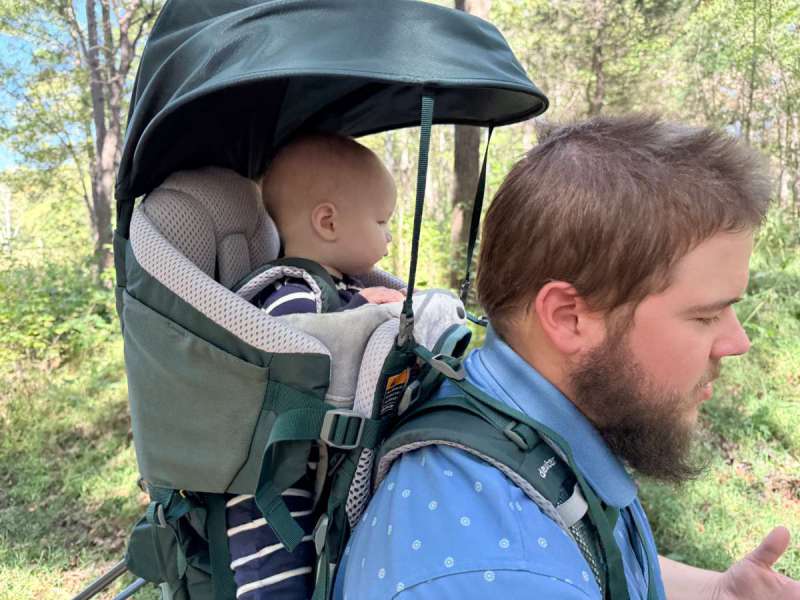
At a glance, the Kid Comfort appears to be an overly large, rather complex backpack, which is actually an apt description for this gadget. There’s one set of straps and buckles and paddings to make things comfortable for the adult, and a completely different set to make things comfortable for the child. The Kid Comfort looks strong and sturdy, more than capable of keeping everything in place, while also having lots of padding to keep things comfy. The outer components are all a pleasant forest green color, while the inner ones are a calm light gray. The design looks both practical and capable, like Deuter thought of everything.
Assembly, installation, and setup
The Kid Comfort comes completely assembled. The only thing we had to do was read the manual and figure out how to adjust all the fastenings. The small, square manual has three sections:
- The first section is a set of pictures that show each part of the carrier.
- The middle section is the text that accompanies the pictures in the first and final sections.
- The final section is a different set of pictures that show how to adjust each part of the carrier.
The result of this arrangement is that we had to awkwardly shuffle back and forth between the sections to figure out what each part of the carrier does and how to adjust it. I think the manual could been a lot more straightforward if Deuter would use standard-sized paper (e.g., 8.5 x 11) so that each page would have the space necessary to identify a part, explain how to adjust it, and include a larger picture.
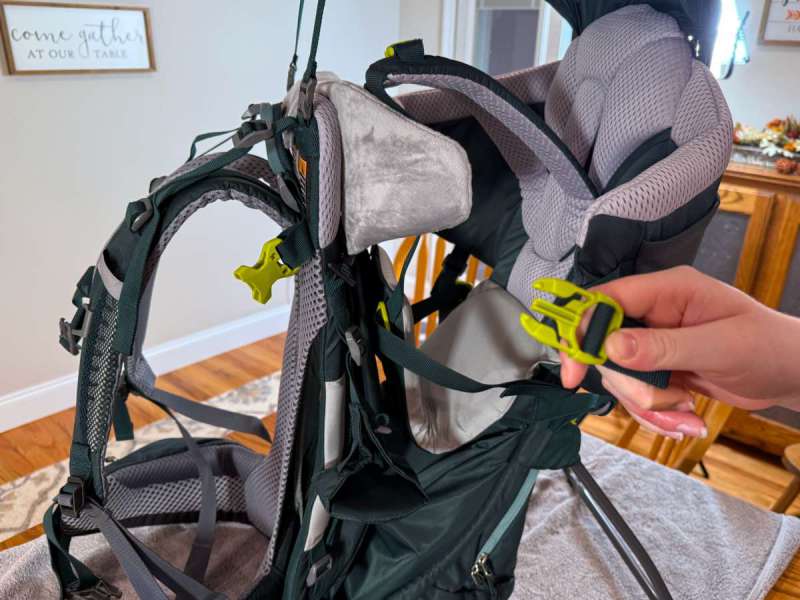
One evening we set out to configure the Deuter Kid Comfort, and I definitely recommend getting the backpack fully adjusted prior to heading out on the trail. We started by placing it on a table to make it easier to identify all the parts. The manual has six major steps for adjusting this carrier, each of which has several minor steps; there are actually 29 steps in all! Yeah, that’s a lot of setup to do.
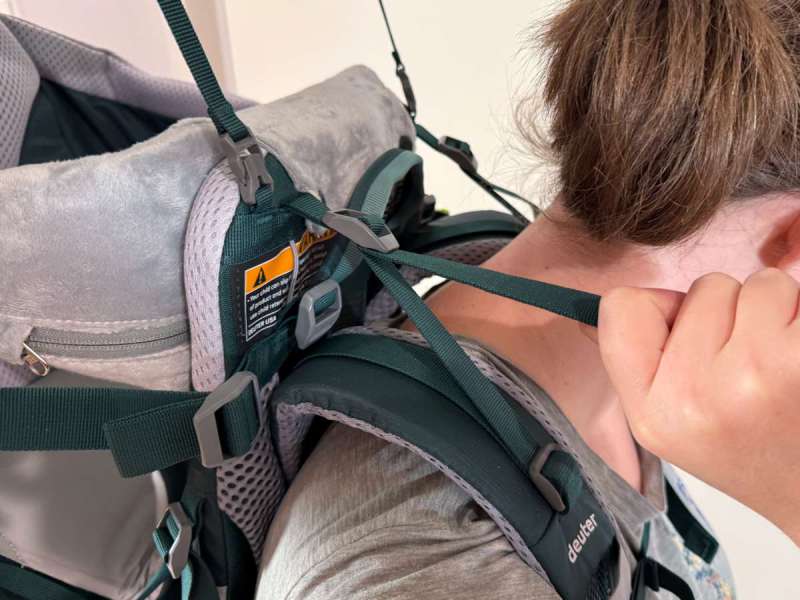
The first major step was to adjust the carry system, the part for the adult, including straps for the waist and the shoulders. Some of the steps were pretty straightforward but others were unintuitive; at times we had to take off the backpack and examine it more closely in order to understand what we were supposed to do. Perhaps the most important step was the one that slid the backpack up and down on the wearer’s back to ensure that the weight of the backpack was situated more on the hips and less on the shoulders. It involved adjusting a strap that was awkwardly located directly behind the wearer’s back, between them and the backpack itself.
The second major step was to adjust the seat height, as the child can sit higher up or lower down depending upon their age. The manual recommends engaging the kickstand to keep it stable before raising or lowering the seat height. This step was also non-intuitive step, but since it was similar to the strap for adjusting the height of the backpack on the wearer, it was not as difficult to figure out. It was still awkward to adjust.
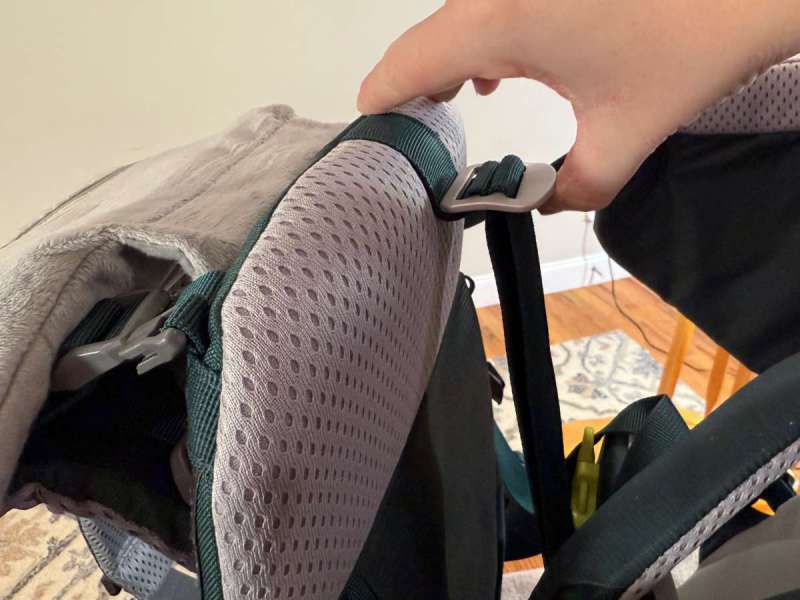
The third major step was to adjust the safety harness of the child. We found this part to be straight forward, as it was similar to configuring a car seat. At the point, we put our grandson, Vasher, into the carrier and snugged things up to fit him.
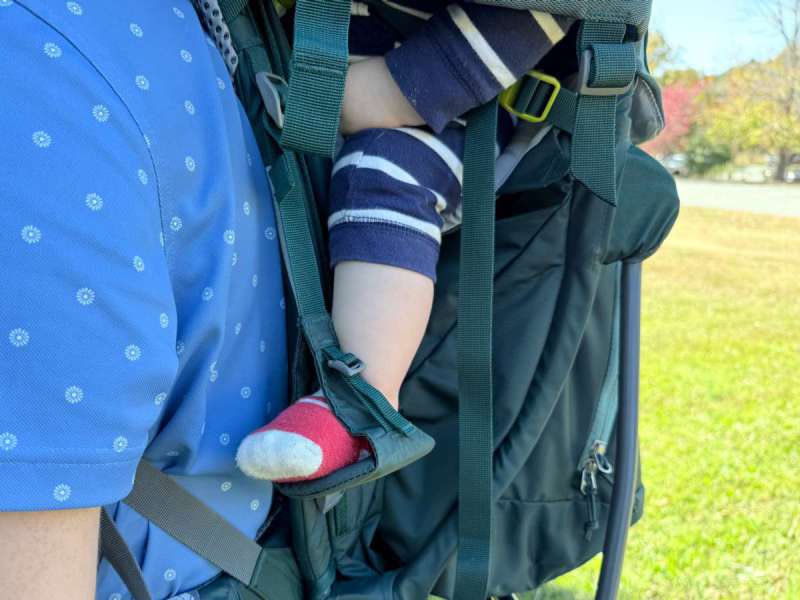
The fourth major step was to adjust the height of the footsteps, something that will be more important as he gets older. This was easy to do.
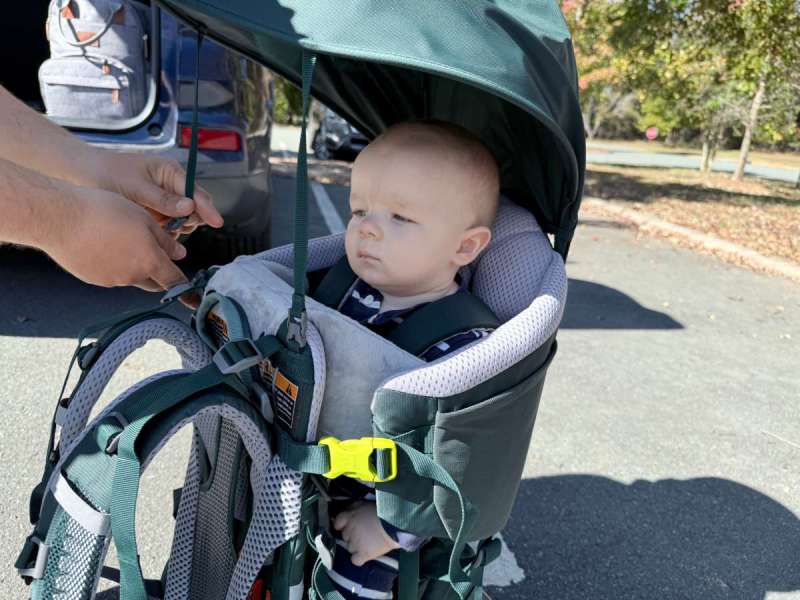
The fifth major step was to put on the sun roof, a feature that we found to be most helpful while hiking. This was also easy to do.
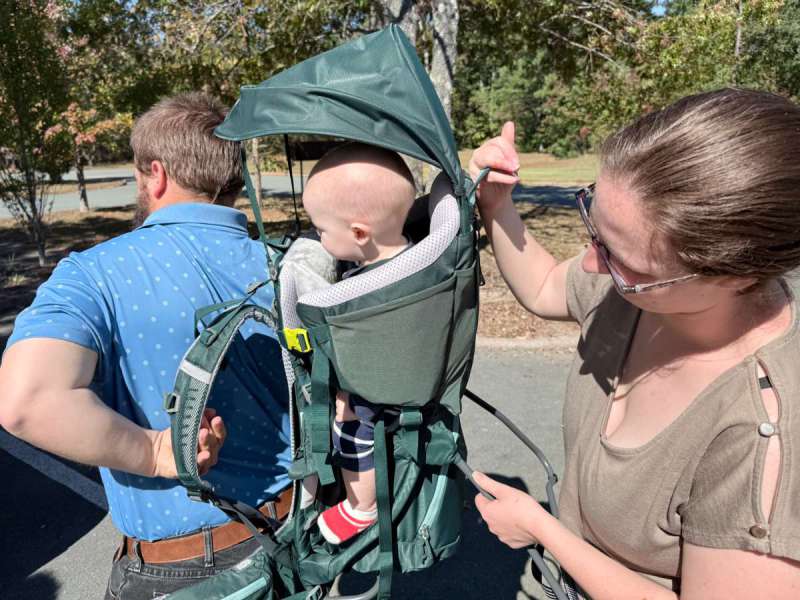
The sixth and final major step was to practice putting on and taking off the kid carrier. It’s just heavy enough to be cumbersome, so this really is a two-person effort. We then switched the backpack to a different adult and found that a bunch of the straps had to be readjusted to be comfortable on the new body.
At this point in the review, we had some initial impressions:
- The Kid Comfort is solidly built. It doesn’t feel like Deuter skimped on anything.
- It comes with a lot of adjustability, which is good, since it means that it should be comfortable for any wearer and any child.
- It comes with a lot of adjustability, which is also bad, as there is a learning curve to understand what to adjust where to make it more comfortable.
- This whole system is surprisingly light, though we would change our minds about this once we put in a child and walked for a couple miles!
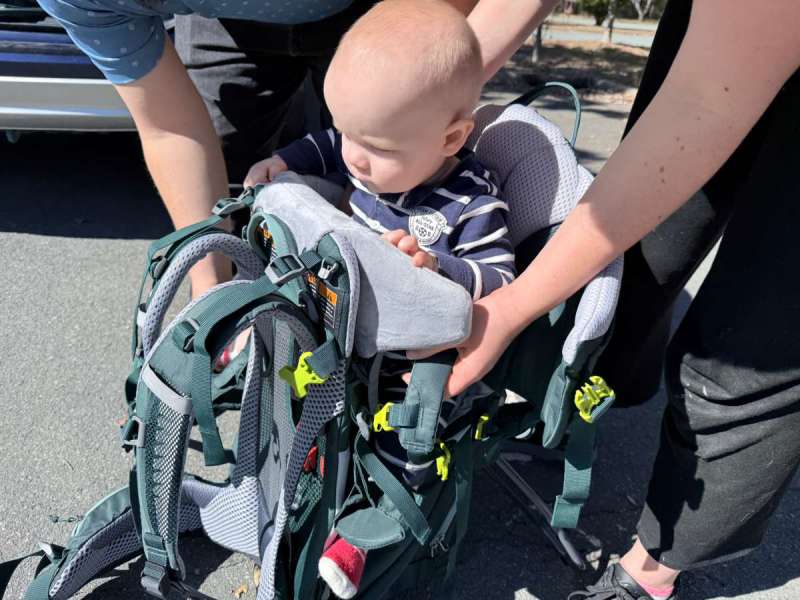
Now we were ready to hit the trails! Unfortunately, this part of the review occurred shortly after Hurricane Helene blasted through the Carolinas, closing nearly all of the trails that we like to hike on. We resorted to testing on some boring, easy trails.
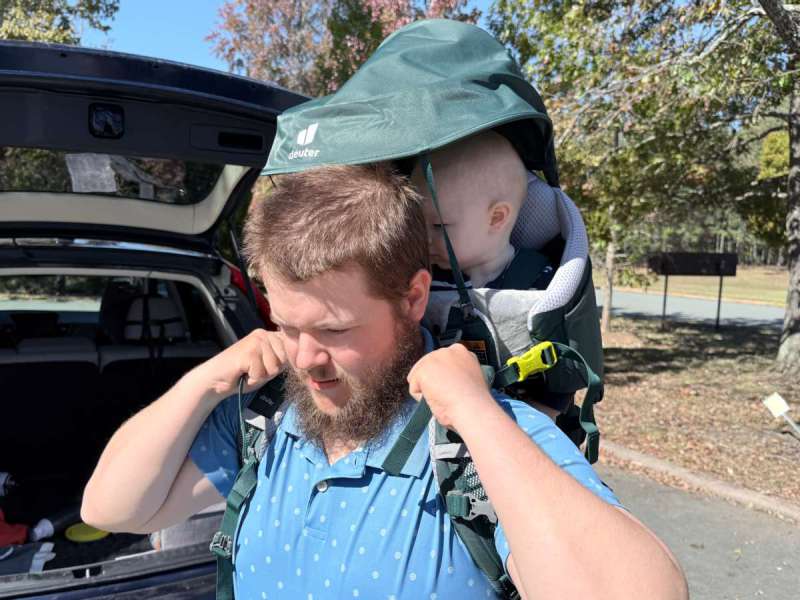
Both our son-in-law, Ryan, and our daughter, Emilee tested the Deuter Kid Comfort Child Carrier to see how well it worked. Ryan wore it first, and after a few adjustments we put it on his back and began to hike. He started out feeling comfortable, but after a while he felt as if too much of the weight was on his hips. This is the stated intent of the backpack, but as he is used to wearing a normal backpack, his hips got sore; he wanted his shoulders to take more of the strain. He also noted that the backpack was a lot heavier than expected with a child in it. If you go hiking more often and regularly carry large backpacks, we suspect that you will have less trouble with the weight.
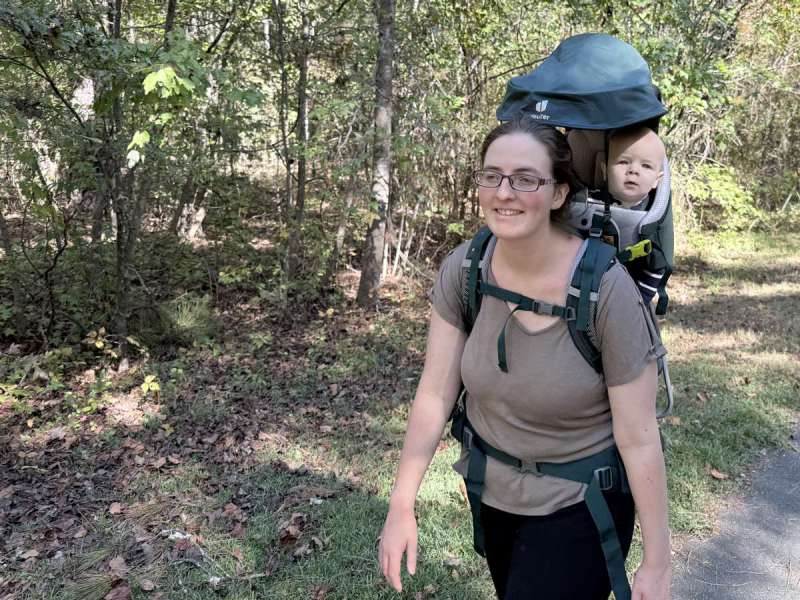
After some time, we switched the backpack over, and Emilee carried it for the rest of the hike. We did not adjust the backpack after this change; instead, we just transferred it straight to her back and tightened a few straps. Ryan and Emilee have a similar height, so we tried not making any adjustments to see what would happen. After just a few minutes of walking however, she felt a lot of strain on her shoulders, so we started adjusting some straps to compensate. A short time later, however, she was once again feeling overly strained. This time we adjusted the back strap that allowed her to move the backpack down some, and she finally realized that she had been wearing the backpack wrong; in other words, nearly all the weight had been on her shoulders. Once we made this change, things were a lot more comfortable for her.

During this hike, we learned a couple things:
- The Deuter Kid Comfort Child Carrier allows its wearer to shift the weight between shoulders and hips however they want. Its adjustability is perhaps its greatest strength.
- Ryan and Emilee each managed to configure the carrier to a more comfortable position; even so, nothing prepared them for the extra weight of a child on their shoulders. They simply need more experience.
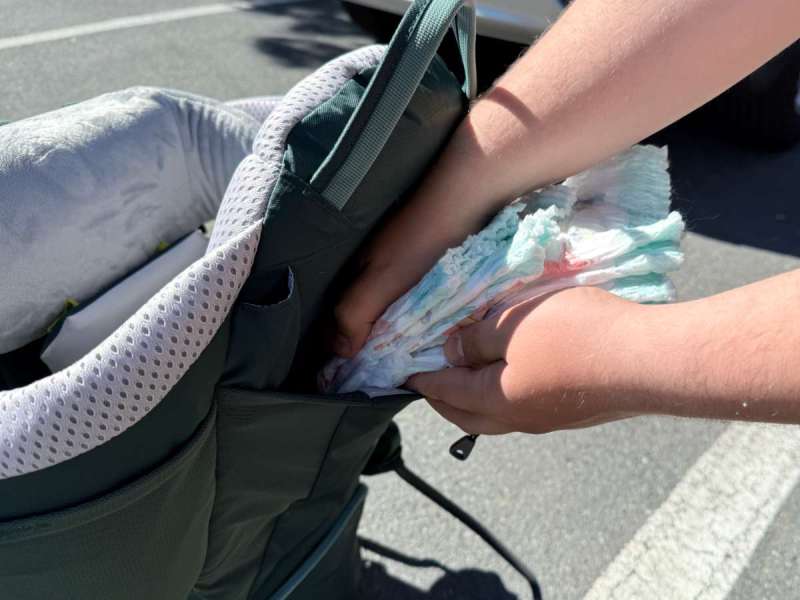
If you have small children, you know all the things that need to be brought along for any outing, things that usually fill a diaper bag. The Kid Comfort has plenty of pockets for diapers, wipes, snacks, and everything else that we needed.

One Sunday afternoon we decided to go apple picking at Stepp’s Orchard. Most of the apple trees are on various hillsides that involve some climbing, a perfect test for the kid carrier. Ryan configured the carrier to put more weight on his shoulders, and then he carried Vasher around for nearly an hour while picking apples. The Kid Comfort was perfect for this! Ryan was free to pick apples, and we could all keep an eye on the child. As it was configured the way he liked it, Ryan never felt extra strain or stress from the carrier.
This backpack has two add-on devices that can be purchased separately, a rain cover and a water bladder.
What I like about the Deuter Kid Comfort Child Carrier
- Our grandson can go hiking with us!
- It’s flexible and adjustable
- This is a quality product
What needs to be improved
- Reorganize the manual
Final thoughts
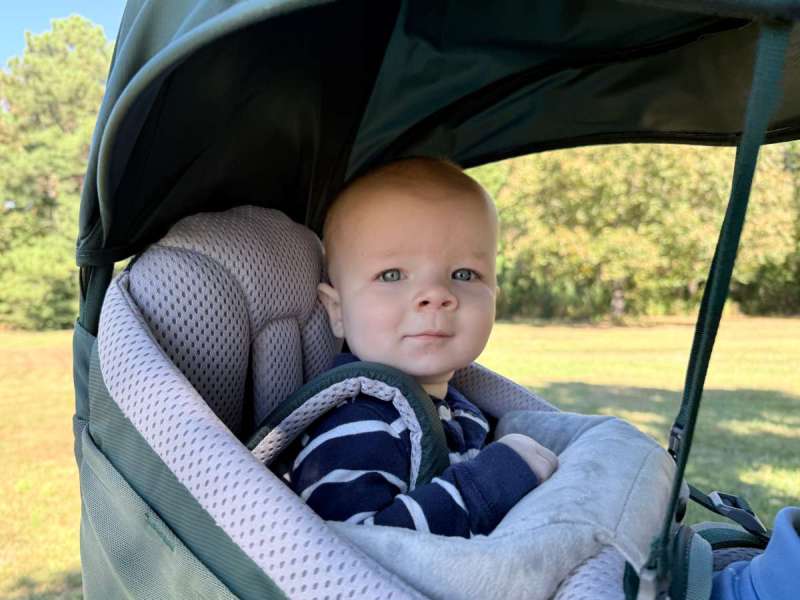
Deuter Kid Comfort Child Carrier is a backpack that enables hikers to carry small children when out on the trail. It’s a well-constructed system with many ways to make adjustments, something that will take a bit of time to learn. Though we were not used to the extra weight of a child on our back, we found it was always possible to make things more comfortable. Although this carrier is not cheap, I believe this is one of those “you get what you pay for” gadgets. If you love to go hiking and want to bring your little one along, I highly recommend that you pick up the Kid Comfort from Deuter.
Price: $320
Where to buy: Deuter and Amazon
Source: The sample for this review was provided free of charge by Deuter. Deuter did not have a final say on the review and did not preview the review before it was published.


